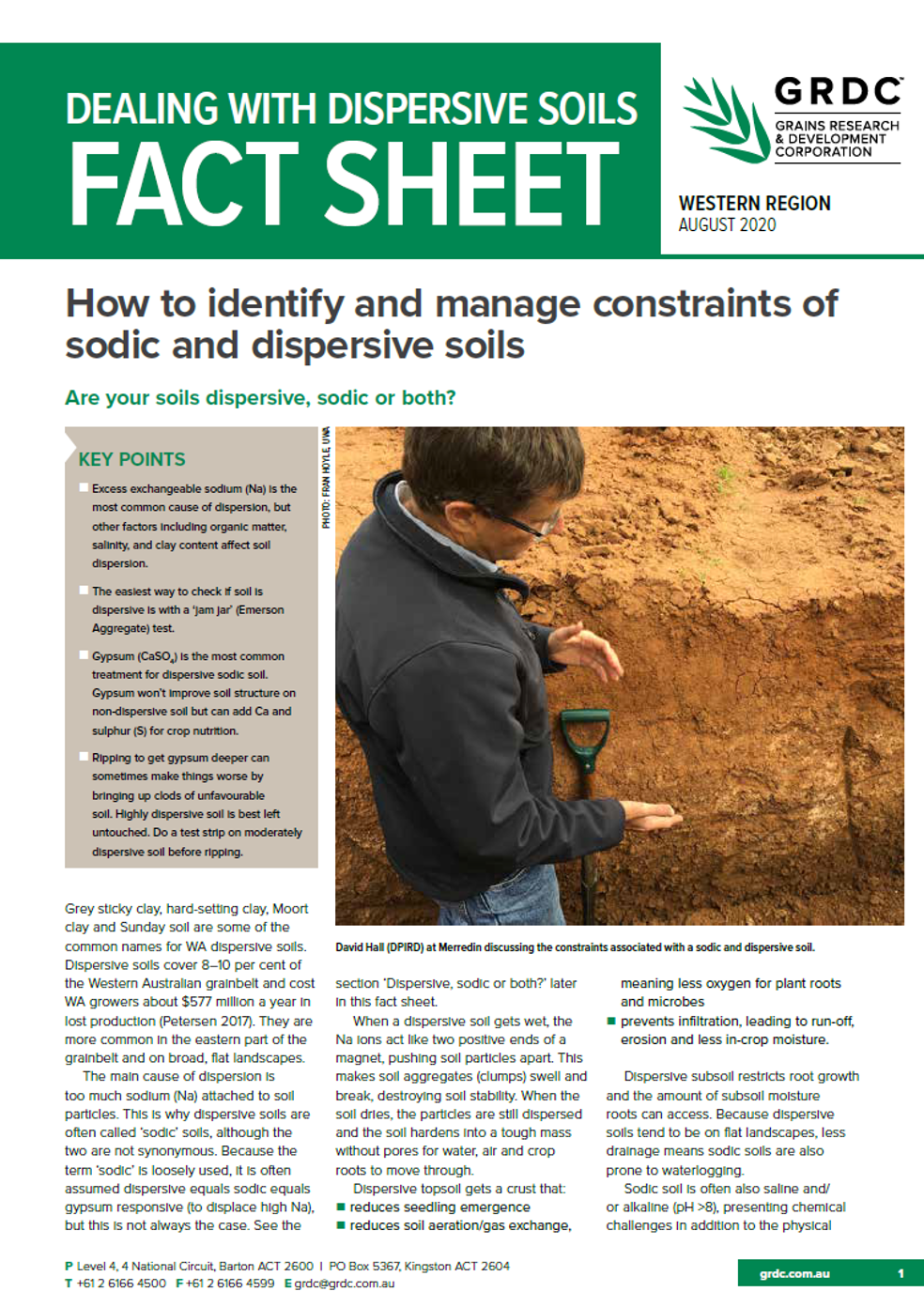Dealing with dispersive soils fact sheet
Dealing with dispersive soils fact sheet
Published: 11 Aug 2020
Grey sticky clay, hard-setting clay, Moort clay and Sunday soil are some of the common names for WA dispersive soils. Dispersive soils cover 8–10 per cent of the Western Australian grainbelt and cost WA growers about $577 million a year in lost production (Petersen 2017). They are more common in the eastern part of the grainbelt and on broad, flat landscapes.
Key points
- Excess exchangeable sodium (Na) is the most common cause of dispersion, but other factors including organic matter, salinity, and clay content affect soil dispersion.
- The easiest way to check if soil is dispersive is with a ‘jam jar’ (Emerson Aggregate) test.
- Gypsum (CaSO4) is the most common treatment for dispersive sodic soil. Gypsum won’t improve soil structure on non-dispersive soil but can add Ca and sulphur (S) for crop nutrition.
- Ripping to get gypsum deeper can sometimes make things worse by bringing up clods of unfavourable soil. Highly dispersive soil is best left untouched. Do a test strip on moderately dispersive soil before ripping.
Download PDF
Region: West
GRDC Project Code: PLT1909-001SAX,

